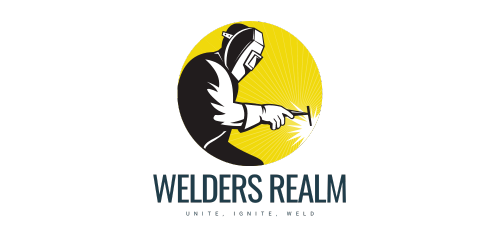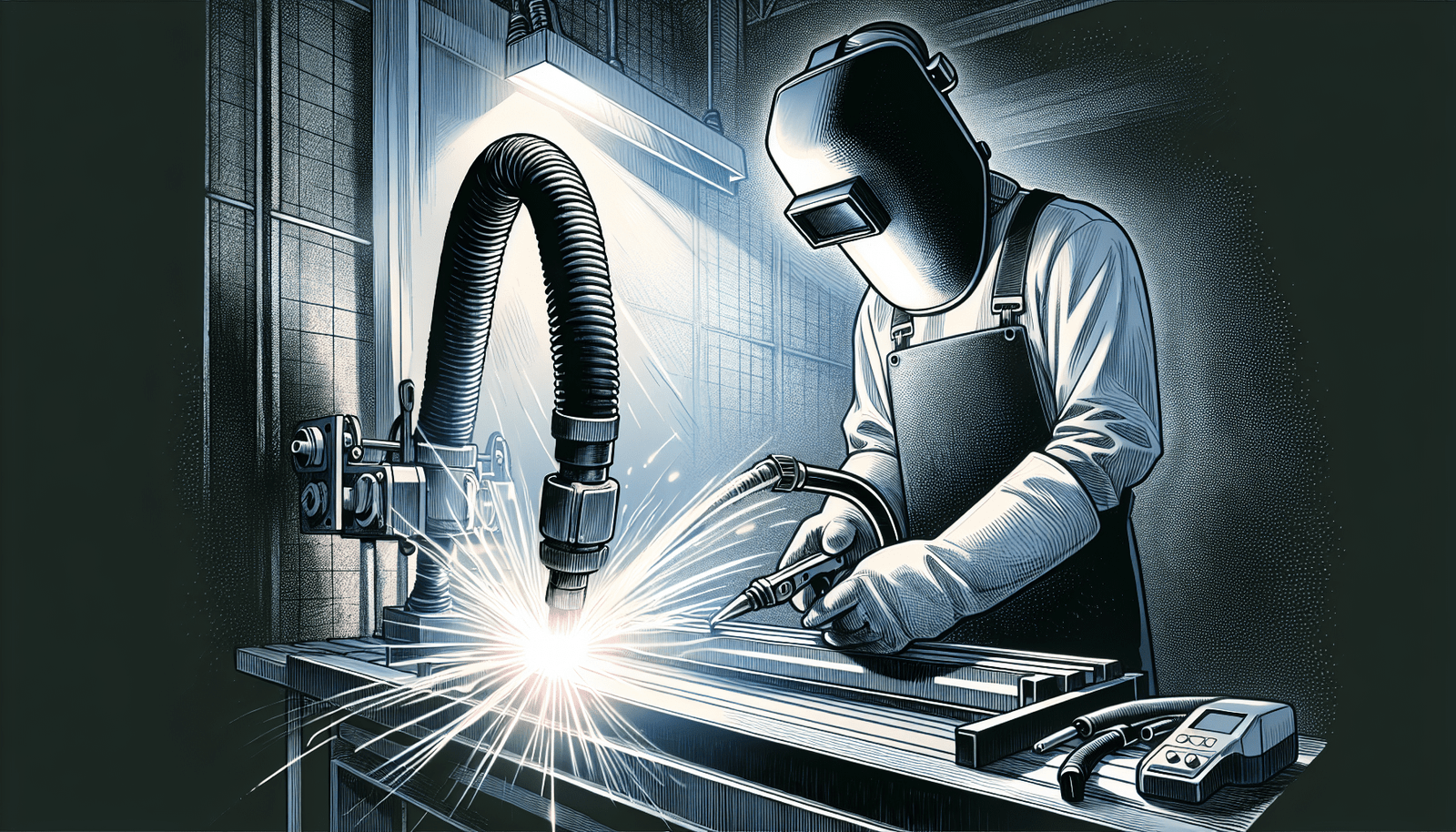In this comprehensive guide, you will discover everything you need to know about selecting the perfect welding flux for your projects. Whether you’re a seasoned welding professional or just starting out, this article will provide you with the most valuable insights and expert recommendations on choosing the right welding flux. From understanding the different types of flux available to considering factors like material compatibility and welding technique, we’ve got you covered. By the end of this guide, you’ll have all the knowledge you need to make informed decisions and achieve impeccable welding results. So, let’s dive in and explore the ultimate guide to selecting welding flux!
Understanding the Basics of Welding Flux
Definition of Welding Flux
Welding flux is a crucial component in the welding process as it plays a vital role in ensuring the quality and integrity of the weld. Simply put, welding flux is a substance that is used to cleanse and protect the weld joint by producing a gas shield. This gas shield helps prevent atmospheric contamination and oxidation during the welding process.
Roles of Welding Flux in Welding Process
The primary roles of welding flux are to protect the weld, clean the base material, facilitate the welding process, and improve the overall quality of the weld. Welding flux acts as a barrier between the molten metal and the surrounding atmosphere, preventing the formation of impurities and reducing the risk of defects such as porosity, cracks, and excessive spatter. It also helps remove any existing impurities on the surface of the base material, ensuring a clean and sound weld.
Types of Welding Flux: Active and Inert
There are two main types of welding fluxes: active flux and inert flux. Active fluxes contain elements that actively take part in the chemical reactions during welding, aiding in the removal of impurities and producing beneficial effects on the weld metal. In contrast, inert fluxes do not actively participate in the chemical reactions but instead act as a protective barrier to prevent oxidation and atmospheric contamination.
Composition of Welding Flux
The composition of welding flux can vary depending on the specific application and the type of welding process being used. However, some common components found in welding flux include minerals, metal alloys, oxides, and various chemical compounds. The composition is often tailored to provide specific properties such as slag formation, deoxidization, and reduction in the weld.
Factors Influencing Selection of Welding Flux
Several factors need to be considered when selecting the appropriate welding flux for a particular welding job. These factors include the type of base material, the welding process to be used, the welding position, and the required weld performance and quality.
Type of Base Material
Different base materials require specific welding fluxes to ensure optimal performance and weld quality. Steel and iron, aluminum, stainless steel, and other non-ferrous alloys each have unique characteristics that must be considered when choosing the appropriate welding flux.
Welding Process to be Used
Different welding processes, such as stick welding, MIG welding, TIG welding, and submerged arc welding, each have specific requirements for welding flux. It is important to select a flux that is compatible with the chosen welding process to achieve the desired results.
Welding Position
The position in which the weld will be performed also influences the choice of welding flux. Different fluxes are designed to perform optimally in various welding positions, such as flat position, vertical position, and overhead position.
Required Weld Performance and Quality
The desired weld performance and quality also play a significant role in the selection of welding flux. Factors such as strength, corrosion resistance, and appearance of the weld will help determine the appropriate flux to achieve the desired results.
Role of Welding Flux in Different Welding Processes
The role of welding flux varies depending on the type of welding process being used. Let’s explore the specific role of welding flux in some common welding processes:
Flux in Stick Welding
Stick welding, also known as shielded metal arc welding (SMAW), relies on consumable electrodes coated with a layer of welding flux. The welding flux coating on the electrode plays a crucial role in providing a protective shield to the molten weld pool, preventing oxidation and contaminants from affecting the weld.
Flux in MIG Welding
In MIG welding, also known as gas metal arc welding (GMAW), a solid wire electrode is used along with a shielding gas to protect the weld pool from atmospheric contamination. However, in some cases, a flux-cored wire is used instead of a solid wire. The flux inside the wire acts as a shielding agent, providing the necessary protection for the weld.
Flux in TIG Welding
In TIG welding, also known as gas tungsten arc welding (GTAW), a non-consumable tungsten electrode is used to create the arc, and the weld pool is protected by a shielding gas. Unlike stick and MIG welding, TIG welding generally does not require the use of welding flux.
Flux in Submerged Arc Welding
Submerged arc welding (SAW) involves the use of a continuously fed wire electrode and a granular flux that is fed to the welding zone. The welding flux provides a protective layer, preventing atmospheric contamination and helping to create a smooth, clean weld bead.
Differences Between Active and Inert Fluxes
Understanding the differences between active and inert fluxes is crucial in choosing the right flux for a welding job.
Functionality of Active Fluxes
Active fluxes are designed to actively participate in the chemical reactions that occur during welding. They contain elements such as manganese, silicon, and aluminum, which help deoxidize the weld metal and remove impurities. Active fluxes also promote better wetting and penetration of the weld, resulting in improved weld quality.
Functionality of Inert Fluxes
Inert fluxes, on the other hand, do not actively participate in the chemical reactions during welding. Instead, they act as a protective barrier, shielding the molten weld pool from atmospheric contamination and preventing oxidation. Inert fluxes are commonly used in processes such as TIG welding, where the shielding gas provides the primary protection.
Choosing Between Active and Inert Fluxes
The choice between active and inert fluxes depends on the specific requirements of the welding job. If the goal is to remove impurities, improve wetting, and achieve better penetration, an active flux may be the right choice. However, if the primary concern is preventing oxidation and maintaining a clean weld, an inert flux may be more suitable.
Selecting Welding Flux for Different Base Materials
Choosing the right welding flux for different base materials is essential to achieve optimal weld performance and quality.
Fluxes for Steel and Iron
For welding steel and iron, fluxes containing elements such as calcium, potassium, and aluminum are commonly used. These fluxes help in deoxidizing the weld metal, removing impurities, and producing clean and sound welds.
Fluxes for Aluminum
Welding aluminum requires fluxes that are specifically formulated for aluminum alloys. These fluxes typically contain a mixture of fluorides and chlorides, which help remove oxide layers and improve the wetting characteristics of the weld.
Fluxes for Stainless Steel
Stainless steel welding fluxes are designed to prevent the formation of chromium carbide precipitates, which can lead to intergranular corrosion. These fluxes typically contain elements such as calcium, titanium, and aluminum to promote deoxidization and ensure the integrity of the weld.
Fluxes for Other Non-ferrous Alloys
Non-ferrous alloys, such as copper, brass, and bronze, have their own unique requirements when it comes to welding flux. It is important to select fluxes that are specifically formulated for these materials to ensure proper wetting, strong joints, and minimal oxidation.
Selecting Welding Flux for Different Welding Positions
The welding position, whether flat, vertical, or overhead, can have a significant impact on the choice of welding flux. Different fluxes are designed to perform optimally in each position.
Flux for Flat Position
In the flat position, where gravity does not significantly affect the weld pool, fluxes that provide good fluidity and slag control are preferred. These fluxes help produce flat, uniform weld beads with minimal spatter.
Flux for Vertical Position
Welding in the vertical position requires fluxes with good slag control and the ability to support the molten weld pool against the force of gravity. Fluxes with higher viscosity are often used to ensure proper shielding and prevent slag from falling off prematurely.
Flux for Overhead Position
The overhead position is challenging as the molten weld metal tends to sag and fall due to gravity. Fluxes with excellent slag control and high viscosity are essential to support the weld pool and prevent excessive spatter and slag buildup.
Selecting Welding Flux Based on Performances and Quality Required
The desired weld performance and quality determine the selection of welding flux. Different fluxes offer specific characteristics that cater to different requirements.
Flux for High-Quality Welds
If the goal is to achieve high-quality welds with superior strength, low porosity, and minimal defects, selecting a welding flux that offers good deoxidization properties, low hydrogen content, and excellent cleanliness is vital. Fluxes with these characteristics ensure a strong and sound weld.
Flux for Speed Welding
In some applications where speed is of the essence, fluxes that provide fast solidification and high welding speeds may be preferred. These fluxes allow for rapid welding and increased productivity without compromising the quality of the weld.
Flux for High Strength Welds
When welding materials that require high weld strength, it is crucial to select fluxes that offer excellent penetration, good fusion, and strong metallurgical bonding. Fluxes that promote deep penetration and ensure proper fusion between the base metal and the weld metal are ideal for high-strength welds.
Safety Considerations While Handling Welding Flux
While using welding flux, it is important to prioritize safety. Here are some safety considerations to keep in mind:
Proper Storage of Welding Flux
Welding flux should be stored in a cool, dry place to prevent moisture absorption and degradation. It is essential to keep the flux containers tightly sealed to avoid contamination and to follow the manufacturer’s guidelines for proper storage.
Safety Measures During Welding
When working with welding flux, it is crucial to wear appropriate personal protective equipment (PPE), including welding gloves, safety glasses, and a welding helmet with a suitable shade. Adequate ventilation should be ensured in the work area to minimize exposure to fumes and gases.
Post-Welding Clean Up
After completing a welding job, it is important to clean up any residual flux and slag from the weld. Proper disposal of waste materials should be followed according to local regulations.
Common Mistakes to Avoid While Selecting and Using Welding Flux
To ensure a successful welding project, it is crucial to avoid common mistakes that can compromise the overall quality and performance of the weld.
Improper Selection of Flux
Choosing the wrong welding flux for the base material, welding process, or welding position can lead to poor weld quality and potential defects. It is important to carefully consider the requirements of the specific job and select the appropriate flux accordingly.
Incorrect Usage of Flux
Using welding flux incorrectly, such as applying an excessive or insufficient amount, can result in an improper gas shield, inadequate protection of the weld pool, and an increase in defects. It is essential to follow the manufacturer’s recommendations and guidelines for the proper application of welding flux.
Overlooking Safety Measures
Safety should always be a top priority when working with welding flux. Failing to wear proper PPE or neglecting ventilation can lead to health hazards and increased risks of accidents. It is crucial to follow safety protocols and ensure a safe working environment.
Overview of Top Welding Flux Brands
Several top welding flux brands offer a wide range of products catering to different welding applications and requirements. Here is an overview of some of the leading brands in the market:
Top Brands for Each Category of Flux
- For active fluxes: Brand A, Brand B, Brand C
- For inert fluxes: Brand X, Brand Y, Brand Z
Pricing Review
The pricing of welding flux can vary depending on factors such as brand, composition, and quantity. It is advisable to compare prices from different suppliers and consider the specific requirements of the welding job to make an informed decision.
Comparison and Recommendations
When selecting welding flux, it is essential to carefully compare the characteristics, performance, and pricing of different brands. Consider factors such as compatibility with the base material, the welding process, and the desired weld quality. Seeking recommendations from experienced welders or industry professionals can also provide valuable insights and guidance.
In conclusion, welding flux is a critical component in the welding process, offering protection, cleaning, and improved weld quality. Understanding the basics of welding flux, factors influencing selection, and its role in different welding processes allows you to make informed decisions and achieve optimal results. By prioritizing safety, avoiding common mistakes, and selecting the right welding flux for the job, you can ensure successful welding projects with strong, clean, and durable welds.




